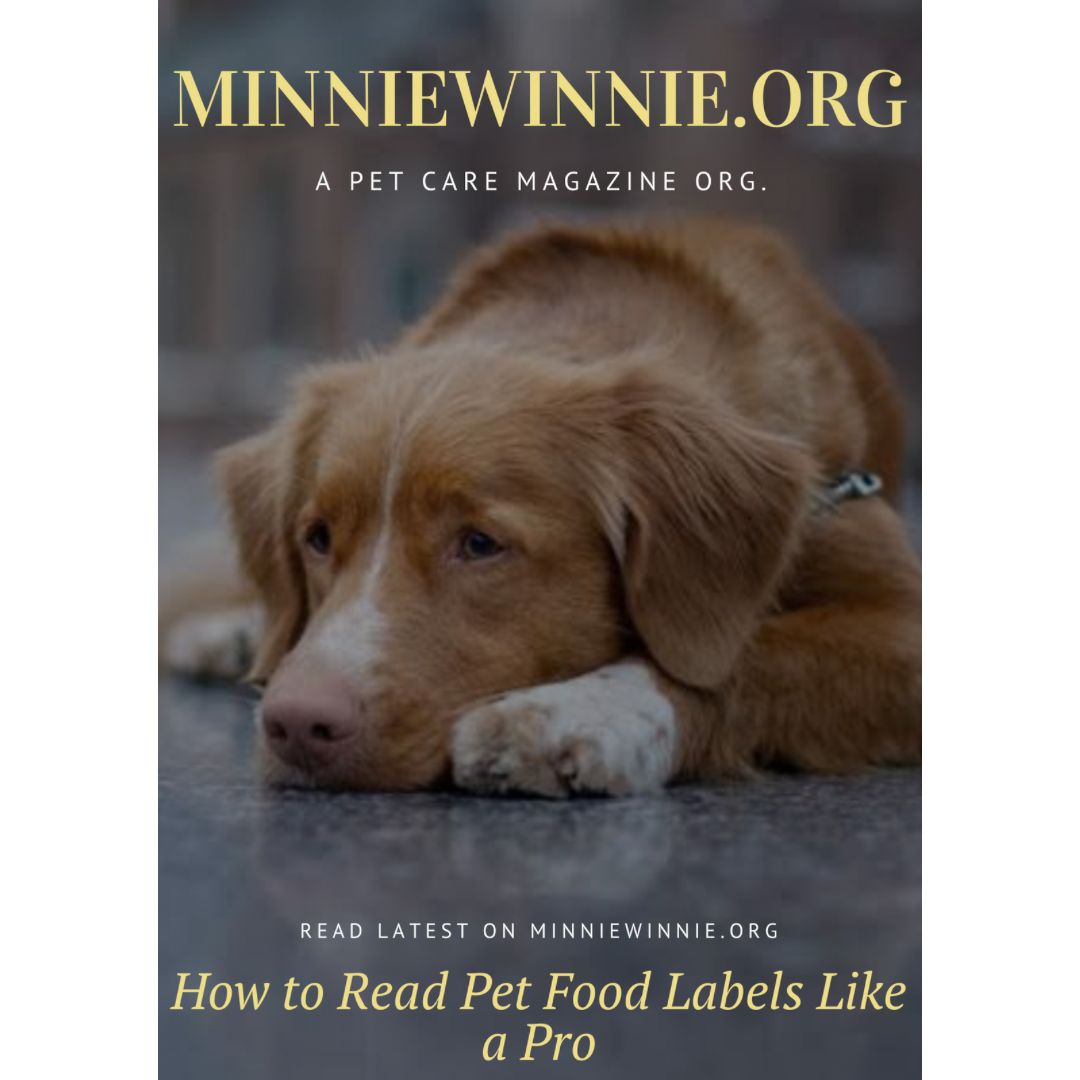How to Read Pet Food Labels Like a Pro
Choosing the right food for your pet is one of the most important decisions you can make as a pet owner. However, pet food labels can be confusing, filled with unfamiliar terms and marketing buzzwords. Understanding how to read these labels like a pro ensures that you can make informed decisions, providing your pet with the nutrition they need to thrive. Here’s a guide to help you decode pet food labels effectively.
1. Understand the Basics of Pet Food Labels
Pet food labels provide crucial information about the product’s ingredients, nutritional content, and suitability for your pet’s needs. The key sections to focus on include the ingredients list, guaranteed analysis, and any nutritional adequacy statements.
- Ingredients List: This section lists everything that goes into the food, arranged by weight from highest to lowest. The first few ingredients are the most important, as they make up the bulk of the food.
- Guaranteed Analysis: This part of the label tells you the minimum or maximum percentages of key nutrients like protein, fat, fiber, and moisture.
- Nutritional Adequacy Statement: A statement that indicates whether the food meets the nutritional levels established by the Association of American Feed Control Officials (AAFCO) for a specific life stage.
2. Decipher the Ingredients List
The ingredients list is where you can find out what exactly is in your pet’s food.
- Primary Ingredients: Look for high-quality sources of protein, such as chicken, beef, or salmon. These should be listed as the first ingredient, indicating they are present in the highest quantity.
- Meat Meals: Ingredients like “chicken meal” or “lamb meal” are concentrated forms of meat that have had the water and fat removed, making them a good source of protein.
- Avoid Fillers: Common fillers include corn, wheat, and soy. While not inherently bad, these are often used to bulk up the food without adding much nutritional value. If your pet has sensitivities, you might want to avoid these ingredients.
- By-products: Terms like “meat by-products” can indicate lower-quality ingredients. By-products are parts of the animal that aren’t typically considered meat, like organs or bones. While some by-products can be nutritious, the quality can vary, so it’s best to be cautious.
- Artificial Additives: Look out for artificial colors, flavors, and preservatives like BHA, BHT, or ethoxyquin. These are generally unnecessary and can be avoided.
3. Analyze the Guaranteed Analysis
The guaranteed analysis section provides a snapshot of the food’s nutritional content.
- Crude Protein: This is the minimum amount of protein in the food. Protein is essential for your pet’s growth, muscle maintenance, and overall health.
- Crude Fat: This indicates the minimum fat content. Fat is a source of energy and helps in the absorption of fat-soluble vitamins.
- Crude Fiber: Fiber is important for digestion. Too much or too little fiber can affect your pet’s digestive health.
- Moisture Content: Especially important in wet foods, this shows the water content. High moisture content is typical for canned foods and can be beneficial for pets that don’t drink enough water.
4. Look for AAFCO Nutritional Adequacy Statements
The AAFCO (Association of American Feed Control Officials) sets the nutritional standards for pet foods. An AAFCO statement on the label indicates whether the food is “complete and balanced” for a specific life stage, such as growth, maintenance, or all life stages.
- Complete and Balanced: This means the food contains all the necessary nutrients in the correct proportions for the specified life stage.
- Formulated vs. Tested: Foods labeled as “formulated to meet AAFCO standards” are created to meet the nutritional guidelines, but haven’t been tested through feeding trials. Foods labeled as “tested in AAFCO feeding trials” have been fed to pets under controlled conditions to ensure they meet nutritional needs.
5. Beware of Marketing Buzzwords
Pet food labels often include terms that are more about marketing than nutrition. Understanding these terms can help you make better choices.
- “Natural”: This term is loosely regulated and can mean different things. It generally indicates that the food does not contain synthetic ingredients, but it doesn’t guarantee overall quality.
- “Organic”: Organic pet foods are made from ingredients that are grown without synthetic pesticides, fertilizers, or genetically modified organisms (GMOs). Look for the USDA organic seal to ensure the product meets organic standards.
- “Grain-Free”: Grain-free diets have become popular, but they aren’t necessary for all pets. Recent research suggests that some grain-free diets may be linked to heart issues in dogs. Consult your veterinarian before switching to a grain-free diet.
- “Human-Grade”: This term suggests that the ingredients are suitable for human consumption, but it’s not an official designation. It’s important to research the brand to confirm the quality of ingredients.
6. Consider Your Pet’s Specific Needs
Every pet is unique, and their dietary needs can vary based on age, breed, size, and health conditions.
- Life Stage: Puppies, adults, and senior pets have different nutritional requirements. Ensure the food is appropriate for your pet’s age.
- Breed-Specific Diets: Some brands offer breed-specific formulas that cater to the unique needs of certain breeds. These can be beneficial but are not always necessary.
- Health Conditions: Pets with allergies, diabetes, kidney disease, or other health conditions may require special diets. Always consult your veterinarian when choosing food for a pet with specific health needs.
7. Research the Brand
Not all pet food brands are created equal. Take the time to research the brand’s reputation, manufacturing processes, and ingredient sourcing.
- Transparency: A trustworthy brand will be transparent about where they source their ingredients and how they manufacture their food.
- Recalls and Reviews: Check for any past recalls and read reviews from other pet owners to gauge the quality and safety of the brand.
8. Transitioning to New Food
If you decide to switch your pet’s food, do so gradually to avoid digestive upset. Mix the new food with the old food, increasing the proportion of new food over a week.
9. Conclusion
Reading pet food labels like a pro requires attention to detail and an understanding of your pet’s unique needs. By focusing on high-quality ingredients, analyzing the guaranteed analysis, and being wary of marketing terms, you can make informed choices that contribute to your pet’s health and happiness. Always consult your veterinarian when selecting a new food, and remember that a well-informed decision today can lead to a healthier, happier life for your pet.










